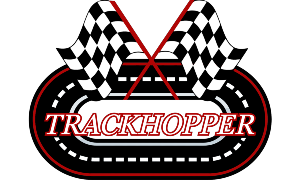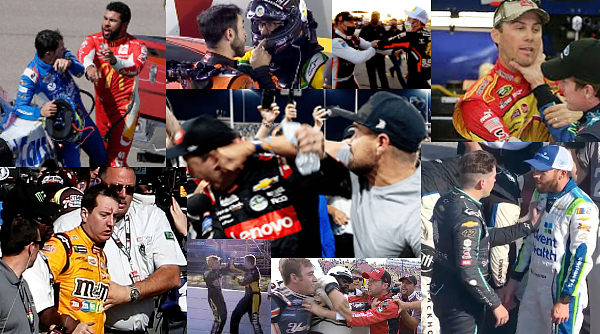The recent penalties handed down by NASCAR following the altercation between Ricky Stenhouse Jr. and Kyle Busch have sparked widespread confusion and frustration among fans and some industry insiders, including a few drivers. Many believe NASCAR’s use of fight footage on social media is hypocritical, arguing that the organization promotes such incidents for publicity while simultaneously punishing those involved. However, this viewpoint overlooks several critical nuances regarding how NASCAR operates and the broader dynamics of social media.
First, it’s essential to recognize that NASCAR’s officials and upper management are distinct from their social media team. The primary objective of ANY social media presence, not just NASCAR, is engagement. Controversial incidents, such as physical fights, naturally generate significant engagement. However, this engagement is not a direct endorsement or promotion of the behavior. Instead, it’s a reflection of public interest and the reality of how social media works.
Moreover, not all related posts originate from NASCAR. Fans often forget that outlets like Fox Sports, NBC, and numerous other media channels and outlets also capture and share this footage, contributing to its widespread circulation. NASCAR cannot control these independent posts, nor can it police the fans who choose to repost videos from various sources. This flood of similar footage from different angles creates the impression that NASCAR is saturating social media with fight content, which is misleading.
Our own platform, TrackHopper, has experienced misidentification by social media users who mistakenly believe we are NASCAR. These users often criticize us for decisions and penalties that we merely report on, not enforce. This confusion highlights a broader issue: many social media users do not take the time to verify the source of a post before reacting, leading to misguided outrage.
It’s also important to note that when NASCAR does share footage of on-track incidents and subsequent altercations, it’s often to provide context for the penalties imposed. This transparency helps fans understand the reasons behind disciplinary actions. On the other hand, when broadcast channels like Fox and NBC replay such footage, it’s their production teams—not NASCAR—that decide what to air. NASCAR owns the resulting footage of the race but does not own the broadcast. So the blame for repeated showings of such footage might be misplaced.
The hypocrisy that fans and some industry insiders point to is based on a misunderstanding of how social media and broadcast media function. Viral videos appear frequently because they are engaging and newsworthy, not necessarily because they are being used as promotional tools by NASCAR.
Furthermore, even if fight footage is occasionally used to draw attention to the sport, this does not negate the need for penalties when warranted. In the case of the Stenhouse-Busch altercation, the penalties were justified due to the premeditated nature of the fight, which drew a crowd much larger than NASCAR would have liked. And the growing crowd and altercation completely distracted from Joey’s Logano’s million dollar win. The involvement of non-drivers in the fight also contributed to the record breaking penalities, as did the fact that some media and bystanders were knocked around. Such incidents, where a confrontation is planned and involves crew members or family, clearly cross the line and require NASCAR’s intervention. Conversely, spontaneous, heat-of-the-moment scuffles between drivers are viewed differently by NASCAR and typically do not result in penalties, such as we saw with the Noah Gragson-Ross Chastain incident.
It’s crucial to recognize these distinctions to fully grasp why penalties are imposed and how footage is shared. At the end of the day, ensuring fair play and safety in the sport is paramount, and penalties are necessary to maintain these standards, regardless of how engaging the related content might be.

